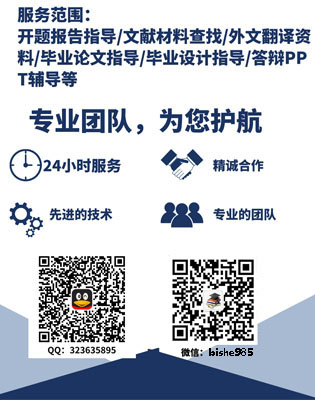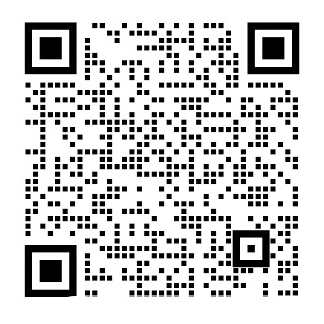汽车英语文献翻译策略研究 A Study on Translation Strategies of Automobile English毕业论文
2020-02-15 19:15:32
摘 要
随着中国经济的快速发展,中国汽车工业蓬勃发展,使得相关从业者和普通汽车用户对汽车英语的需求日益增加。汽车英语作为科技英语的一个分支,具有其独特的语言特征。这要求翻译人员了解汽车英语的基本特征,熟悉相应的翻译原则和技巧,并灵活地将其转化为翻译成果。本文从词汇、语法和语言结构三个层面研究汽车英语的语言特征和翻译策略。词汇特征包含首字母缩略词,合成词和专业用语,语法特征包含被动语态和省略句两方面,语言结构特征包含句式和文体特征两方面。同时,本文在汽车英语主要翻译技巧的讨论基础上,研究了具有实证的翻译策略。研究汽车英语翻译策略有助于解决实际问题,因此具有重大的现实意义。
关键词:汽车英语,语言特点,翻译技巧,翻译策略
Abstract
With the rapid development of China's economy, Chinese automobile industry is thriving , making automobile English an increasing demand for practitioners and ordinary car users.Automobile English, as a branch of EST, has its unique language features. This requires translators to understand the basic features of automobile English, familiarize themselves with the corresponding translation principles and techniques, and flexibly put them into translation practice. This paper studies language features of automobile English at three levels—lexical, grammatical and structural levels. It analyses lexical features from the aspects of acronym, compounding and specialized use of common English words, grammatical features from passive voice and elliptical sentences, and structural features from sentence patterns and stylistic features. Also, based on the discussion of major translation techniques of automobile English, the paper studies translation strategies with solid evidence. The research on automobile English translation can help solve the problem and therefore is of great practical significance.
Key words: Auto English, language features, translation techniques, translation strategies
Contents
1 Introduction 5
1.1 Research Backgrounds 5
1.2 Research Objective 6
2 Literature Review 6
3 Language Features of Automobile English 7
3.1 Lexical features 7
3.2 Grammatical features 9
3.3 Structural features 10
4 Translation Skills 11
4.1 Diction 11
4.2 Amplification 12
4.3 Omission 12
4.4 Conversion 12
5 Translation Strategies 13
5.1 Literal translation 14
5.2 Free translation 17
6 Conclusion 17
References 18
A Study on Translation Strategies of Automobile English
1 Introduction
China’s car industry is thriving rapidly. Under such circumstances, automobile English becomes increasingly essential to many relevant staff and car users. In this chapter, the author will discuss the background and objective of this research in details.
1.1 Research Backgrounds
With the rapid development of China's economy, Chinese automobile industry is thriving with local brands, joint-venture companies and overseas enterprises competing in the car market, making automobile English an increasing demand for practitioners and ordinary car users.
Today, scientific exchanges between China and other countries and regions all over the world have been increasingly strengthened due to the new technological revolution. Therefore, EST (English for Science and Technology) translation now plays a pivotal role in the world’s sci-tech exchanges and cooperation. However, there is not much effective research on automotive English.
Automobile English, as a branch of EST, has its unique language features because it edges into multiple disciplines including materials science, aerodynamics, dynamics, ergonomics, optics and some other specialized fields. It is far more complicated than a combination of everyday English and some professional words. This requires translators to understand the basic features of automobile English, familiarize themselves with the corresponding translation principles and techniques, and flexibly put them into translation practice.
Currently, the quality of automobile English translation varies greatly. Some of the translation works are accurate, but some are poorly done and difficult to understand for its target audience. Such situation is caused by the fact that most translators are lack of relevant scientific knowledge while the technical people are not well equipped with translating skills, and may impede the development of automobile industry. The research on automobile English translation can help solve the problem and therefore is of great practical significance.
1.2 Research Objective
This paper studies the language features of automobile English at three levels—lexical, grammatical and structural levels. It analyses lexical features from the aspects of abbreviation, compounding and specialized use of common English words; grammatical features from passive voice and elliptical sentences; and structural features from sentence patterns and expository writing style. Also, based on the discussion of major translation techniques of automobile English, the paper studies translation strategies with solid evidence.
This paper aims to help readers get to know the language features of automobile English and therefore have a deeper understanding for the translation of automobile English. It tends to explore a simpler, more comprehensive and more specific translation method to help further solve the problem of translating automobile English, and to make the reading of auto-English text less difficult. It aims to perfect the EST translation system as well. Finally, it may promote the scientific and technical exchanges and cooperation of automobile industry.
To realize such a goal, the author has read and will read more related documents to learn more about the existing research findings. In addition, the author plans to acquire relevant information by using online resources for future reference, such as network databases. To make further analysis, the author shall organize the acquired information on certain features and categorize into different subdivisions. This paper mainly analyses the translation strategies of automobile English by using theoretical and empirical methods.
2 Literature Review
The research on automobile English translation mainly studies from two aspects, namely the language features of automobile English and translation strategies of it.
The language features of automobile English can be analyzed on three levels—lexical, grammatical and structural levels. Lian Baohua (2011) analyses its lexical features from the aspects of abbreviation, clipped words and specialized use of common English words; grammatical features from impersonal structure, passive voice, nomination structure and a frequent use of non-finite verb; and structural features from long sentences and a common use of postpositive attributives.
Translation strategies mainly consist of literal translation and free translation. Literal translation is more frequently employed when involving automobile English. Zhang Youming (2018) explores some translation skills of Auto English with examples, namely,determining correct meaning of words, long sentence translation and word order adjustment. Meng Hongyu (2017) explores some translation techniques of automobile English such as amplification, omission and conversion under the strategy of literal translation with solid evidence.
Judging by the existing research findings, the results are still far from expected. Although some have discussed the basic language features of automobile English and certain translation rules, most of the papers only focus on specific translation techniques instead of translation strategies on a larger scale. In view of this, this paper studies general language features of automobile English and proposes certain translation strategies based on existing relevant research findings.
3 Language Features of Automobile English
3.1 Lexical features
Automobile English is mainly used to introduce modern automotive knowledge, including automotive manufacturing, inspection and maintenance. Therefore, automobile English has its own specific vocabulary and terminology, which is rigorously standardized and highly specialized.
3.1.1 Acronym




